#Diasporic
Explore tagged Tumblr posts
Text
Spirits and their common uses and misconceptions
The Congo Spirit
This better known spirit is well known through the Espiritismo community, but also through other spiritual communities like, Umbanda, Palo Mayombe, Santeria, Sanse, 21 divisions and Haitian Vudu. Let's start off with some history, The republic of Congo inhabits so many diverse religious communities and this wasn't any different before colonialism, much of their spiritual practices were tied to animism, vitalism, herbalism, witchcraft, ancestral and spirit veneration and sorcery. Some commonly known congo spirits are Tata/Papa Francisco, Negro, Tata Jose, Papa Guinea, Candelo, Felipe, to name a few. Many of these spirits were once living and were commonly known as witch doctors, paleros, root workers, and juju men. They faced enslavement during colonialism due to their religious/spiritual practices being deemed as devil worship through Christianity and many had to hide their beliefs through syncretism to Christian saints. It's commonly misconceived that these spirits are rageful and angry spirits, yet that is far from the truth they can be playful, wise, gentle and foolish. They love to play tricks and hide items around in the house, but not to enrage one, but to teach one patience and care. Many were enslaved so they do tend to protect their kin and those they walk with, with great strength. They are able to remove spiritual ailments, witchcraft, evil eye, espiritus oscuros (dark spirits), and negative energy off a practicioner. They can be offered liquor, tobacco, black coffee, candy, candle light, sharpened stones and water. These are spirits of light, but they also are able to teach great offensive magic. They can usually be housed in a rock and stick found through a trip to the mountains or woods. You would offer the spirit of the forest or mountain an offering for these gifts and customize them to what the spirit guides you to do. Usually a libation (a drink poured out to honor and give thanks to a particular spirit) is presented through this process as well as 21 pennies washed and prayed over with a cigar broken into half. You could also offer some popcorn and some pennies and it will suffice, if you're running short on some dough. The rock and stick must be consecrated with smoke and liquor. Many of these spirits had their own spiritual beliefs so they might pull you to learn about their belief system and even get intiated to appease the spirit. Also some of them tend to be in service of a greater Deity, Loa, and/or Orisha. SEDIFE! They resonate with the number 3 and 7. The colors white, black and red can also be used to represent them.
Prayer to El Congo
O Glorious Congo Spirit, for your virtues you have entered into the Kingdom of God and have obtained the blessings of Heaven. You leader of the heavenly commission of spirits and surrounded by Angels. I an admirer of your strength and courage, knowledge and wisdom, ask in the name of the Father, Son and Holy Spirit that you fill my body with your powers and aid me in vanquishing the evil thoughts sent by my enemies. Liberate me O Congo spirit from the snare of the Devil, and the demons that surround him. Vanquish from me all evil spirits and bind their hands and feet, may they never reach me, shut their mouths so they may never speak to or on me. O Glorious spirit of the Congo, with you at my side I shall defeat all my enemies and with your strength I shall overcome all obstacles and opposition. With your sublime powers given to you by God, I ask that you aid me in my daily necessities. Guard my home against envy, hate, jealousy, bad luck, witchcraft and all that is evil. Free me from all negative forces. I light this candle in your honor, and ask that you illuminate my path. As it is, So it is done. AMEN!
youtube
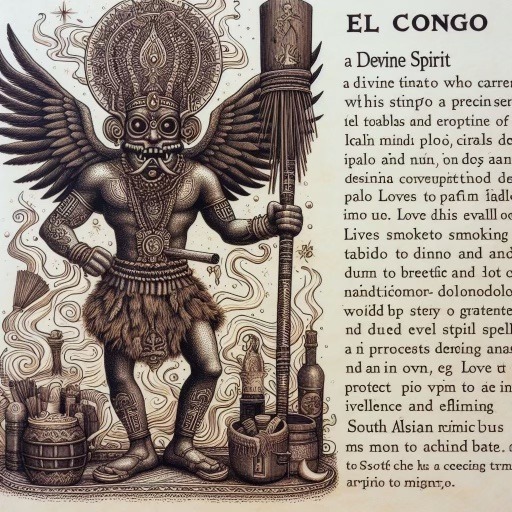
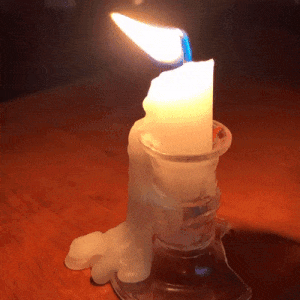
#brujo#espiritismo#magic#magus#palo mayombe#palo#congo#congo spirit#spiritualism#spirits#colonialism#witches#sanse#candelo#sedife#ATR#diaspora#diasporic#religion#faith#prayer#spells#folk magic#santeria#republic of congo#animism#rituals#magick#Youtube
5 notes
·
View notes
Text

Italians seem to have chosen very well. As a South African I can provide two interesting facts, namely that: 1. There is a sizeable population in the country. 2. During WWII Italian POWs were brought in and many were in forced labour building infrastructure. I was once told that they worked on the construction of some of the many passes of Johannesburg …

In any case, if you followed this rabbit hole like I did, you wouldn’t find any mention of Italians…
#Italian#Italians#diaspora#diasporic#trolleng#trolledu#speaking#Johannesburg#south africa#South African#history#interesting
0 notes
Text
leftists genuinely need to start confronting the fact that if they’re unwilling to associate with anyone who has “connections” to israel or israelis then they’re never going to know a single jew
#jumblr#judaism#leftist antisemitism#antizionism#jewish#and don't try to pick a token jew in your life that you think has properly cleansed themselves of any ties to israel#so you can now parade them around as an example and absolve yourself#because i guarantee that they are intentionally not being fully transparent with you#because they know how you'll react. they know deep down that no matter how antizionist they are they will always be A Jew#anyway almost half of the world's jewish population lives in israel#do i love that globally jews are becoming less and less diasporic?#and condensing so much in one place typically by force/necessity? no! it terrifies me! that cannot bode well for us!#but that is the current reality. and it means that much of the world's jewish culture is centered in & around israel#so any jews who are connected to jewish culture & community will therefore automatically be connected to....yeah. israel.#sorry that that is so deeply inconvenient to leftists but it's past time to wake the fuck up and engage with reality#because you're never going to get anywhere without jews#text#suchbeloved
922 notes
·
View notes
Text
Once, Babylon seemed an invincible threat. Babylon is gone now; only archaeologists remember it.
We're still here.
Once, Rome seemed an invincible threat. Rome is gone now, only tourists remember it.
We're still here.
Once, the Crusaders seemed an invincible threat. The Crusaders are gone now, only historical dramas remember them.
We're still here.
Once, scapegoating for plague seemed an invincible threat. Those who scapegoated us are gone, long forgotten, the plague slain by antibiotics.
We're still here.
Once, the Inquisition seemed an invincible threat. The Inquisition is gone now, only comedians remember them.
We're still here.
Once, the rise of exclusionary nationalism seemed an invincible threat. Those nations have risen and fallen, the political movements that forged them remembered only by historians.
We're still here.
Once, the rise of Eugenics rendering us inferior vermin seemed an invincible threat. Eugenics has fallen, only historians and the scorned remember it.
We're still here.
Once, the Tsars both White and Red seemed invincible. The Tsars of both colors are gone now, and only a pale and thinly stretched shadow remembers them.
We're still here.
Once, the third Reich of Germany seemed an invincible threat. The Third Reich is gone now, and only desperate fools remember them.
We're still here.
Now, old new dangers have risen, those same desperate fools and former friends seeking scapegoats, who together seem invincible and inescapable.
But they, as with all things, will pass, in time.
And we will still be here.
#European cultural sphere diasporic traumas#Sepharadim and Mizrahim I appologize for not adding more bits for your own particular diasporic traumas#I'm not as familiar as I'd like and didn't want to get something wrong which I probably would if I relied on Google and wikis#diaspora#jumblr#jewish
1K notes
·
View notes
Text
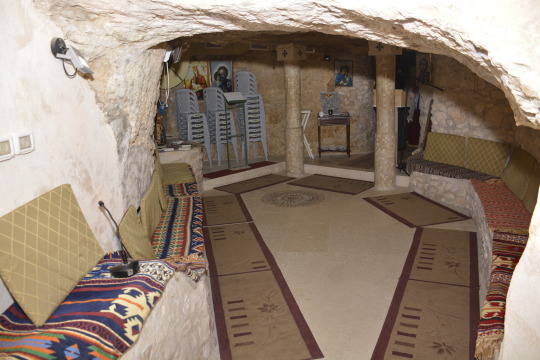
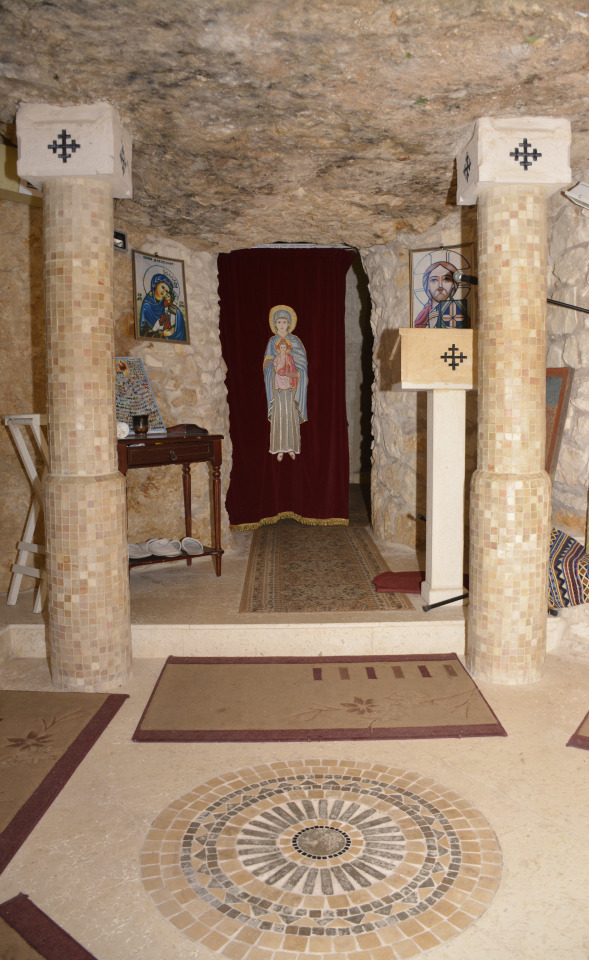
the church in the coptic monastery of the virgin mary in bethlehem, palestine. this unique church is built inside of a cave tunnel which connects it to the nearby church of the nativity. the holy family is said to have passed through it during their stay in bethlehem. saint helena, who established churches across palestine during her time, is said to have established this one as well. the coptic archbishop of jerusalem purchased this and four nearby homes in the 1950s, establishing the monastery and re-establishing the church. today, the site is maintained by two nuns.
#palestine#coptic#interior#worship#christian#diasporic palestine#cave worship#my posts#found a kuwaiti coptic church with a flickr with a ton of pictures of palestinian coptic churches#so i may post some very soon...#according to what i read about this the nuns are renown for their icon paintings & crafts#but i couldn't find any sort of online description of/by them even in arabic#so i didnt mention it in the caption
1K notes
·
View notes
Text

twinfang
#alia is more panther-coded to me but i’ve been thinking a lot about vpr as an extension of her hunting/stalking prey as a drk vibe too#also like. protecting others by trade and by promise. y’all get it#the connection to her clan’s (diasporic) culture gets me so bad too. anyway! new glam!#dani plays ffxiv#game: ffxiv#oc: d'alia liveq#lavampira poses#ffxiv gpose#gposers#ffxiv glamour#miqo'te
88 notes
·
View notes
Text

Al-Saddiq Al-Raddi, from "Asylum Papers" (trans. Bryar Bajalan & Shook) [ID'd]
#q#lit#quotes#poetry#typography#id included#al saddiq al raddi#asylum papers#sudanese lit#diaspore blues#m#x
209 notes
·
View notes
Text

felt like drawing some diaspore losing their peppiness. and then parent slate cause. reasons
75 notes
·
View notes
Text

My half of an art trade with @owtechnolich . It's Diaspore!! Sweet baby ^3^
Ehem, Diaspore is actually a young adult, and very interested in tinkering with technology, especially of the Nomai kind.
They are also extremely adorable and I want to adopt them *sobs*
76 notes
·
View notes
Text
I’ve noticed that black people who’ve never spent an extended amount of time in the south or interacted meaningfully with southern black people can never understand why swaths of us won’t leave that region …the depth of black American history and culture in states people think are just full of white hicks is incredible
#tiny museums dedicated to distinct diasporic cultures staffed by one grandpa#churches that have been standing since the 1800s#family’s who still live next to the first plot of land their ancestors owned#a Jamaican from New York not finna get it most of the time lmaooo
59 notes
·
View notes
Text
What I love and what's heartbreaking about Diasporic languages (e.g., Ladino, Yiddish, ect. ect.) is that I see them as languages of survival. Survival of jewish culture and communities, survival of people in lands that were too often opposed to their very existence. These languages are beautiful to me because I know it's am yisrael chai is irrevocably true, heartbreaking because the Diaspora can be such a hostile environment.
And I don't think this is what many people (non-jews especially, when we're talking about jewish diasporic languages) get. Languages such as diasporic languages exist in context of survival. It's such a complex feeling I have, because I love these languages, and at the same time know why they often had to exist.
#jumblr#jewish politics#jewish diaspora#personal thoughts tag#also it hurts when i look at the list of Diasporic languages and see (extinct) roght after it#because i can only imaging what made those languages extinct and it's just sickening#this is part of the reason i want to learn yiddish. i see it as a complex language of survival#plus yiddish is what i've seen most people in my area speak and know#i wouldn't be opposed toward learning other Diasporic languages though#but since i've learned a little german before yiddish is kind of easier for me#ladino might actually be the second Diasporic language i learn actually.......
78 notes
·
View notes
Text
It means a lot to me that Acau and Jungryeok were so supportive of Tina whenever she tried speaking Korean. Being a diaspora is hard, especially when you're still learning your family's language cause they didn't teach you it growing up; its nice seeing them encourage her and wanting to help her get better at it. If you're in the same boat, don't be ashamed of it, multi-ethnicity is its own unique blend of cultures and its wonderful, and if learning your family's language is something you've been wanting to do just go for it! Don't be afraid of the hurdles, go at your own pace and remember that you're no less your culture because you were raised somewhere else. Sincerely, someone who is very behind on their portuguese studies😁
203 notes
·
View notes
Text
Perfumes Used in Your Practice.

In this post I'll wanna talk about perfumes or (parfum) in French and colognes. Now if you seen my other post on colognes I talk about this I a older post link at the bottom. In this post I want to dive a little deeper on these threes by .L.T.Piver
These are some that popular in Haitian Vodou, New Orleans Voodoo, Puerto Rico Espiritismo, Sanse , Santeria and so on. These are all ADR religions. All these perfume or lotions is what there were called are good for spiritual bath and what someone like me would use them for.
But let's get into it; starting with the earliest one.

Starting with the 1885, Alphonse Heliotrope Blanc”, the first Eau de Cologne. This is another good one can be used in protecting and ward off negative energy, bad energies, Great for spiritual baths like cleanings can be added with coconut water Florida water etc for your baths.

Next we have Reve d'Or: Released in 1889. This old school scent is characterized by woody and aromatic accords. This would be used also in spiritual baths and is giving to the Vodou Spirits such as Erzulie Dantor, also Oya, Mami Wata. If your into neopaganism this is used for the Crone aspect of the Goddess.

Last we have POMPEIA" was created in 1907, it floral with an oriental note. This type of smell would have been popular in Ancient Egypt used in baths as well or worn by someone like Cleopatra. Some will offer it to La Sir��ne, Yemaya, Saint Clare of Assisi, sometimes Simbi even the Mothered Goddess in New age
Now the three together if you follow a ADR religion like it can represent the three Orishas like Oya, Oshun and Yemaya. In Vodou it would be Erzulie Dantor, Erzulie Freda and La Sirène.
In let's say Espiritismo I was told The Three Marias" generally refer to the spirits of Mary Magdalene, the Virgin Mary, and Mary Cleophas (also called Faith, Hope and Charity.) 👇

It can represent the three goddess. The Maiden, Mother, Crone. 👇

They can represent The Moirai or three Greek Goddesses of Fate and Destiny, or Moirae Mythopedia, also known as the Fates. They are Clotho, Lachesis, and Atropos. 👇

Last if your into Voodoo or Vodou The Marasa. Etc basically the twins or sisters.👇

Is the two links I mentioned.
#like and/or reblog!#spiritual#google search#follow my blog#southern hoodoo#traditional hoodoo#rootwork#ask me anything#traditional rootwork#rootwork questions#Vodou#african diasporic#african spirituality#Perfumes#Colognes#message for help#send a message#community support
35 notes
·
View notes
Text

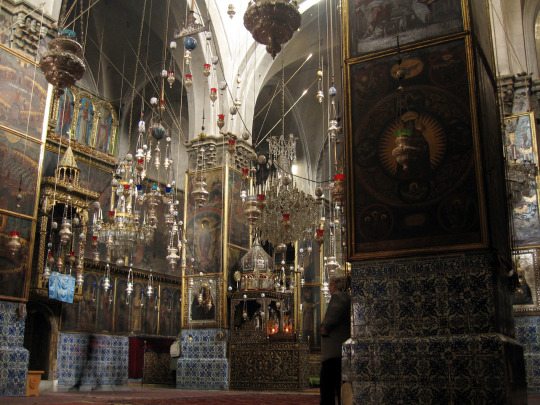
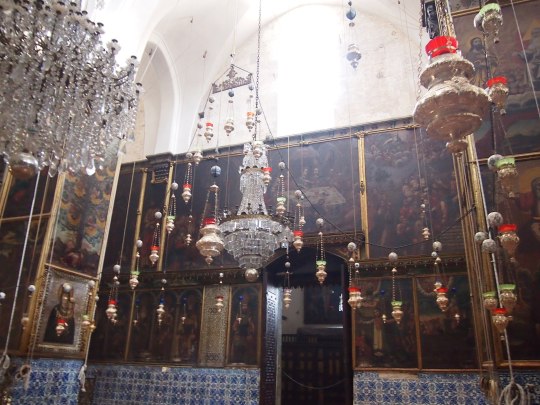
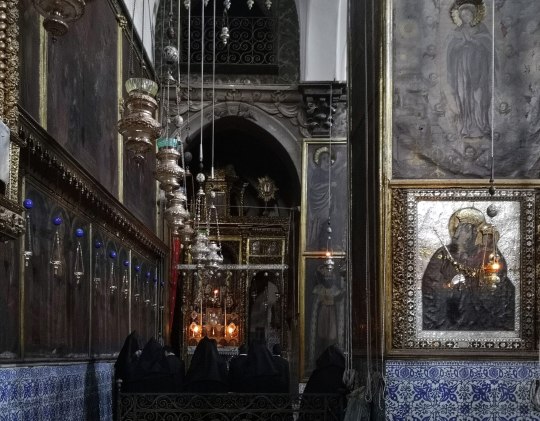
the cathedral of st. james in jerusalem, palestine. this is the principal church of the armenian patriarchate in jerusalem.
the armenian community in palestine is one of the oldest continuous diaspora communities in the world - dating back to the 1st century. though this church was founded in the 4th century, the current structure was built in the 12th.
3K notes
·
View notes
Text
The Hoodoo That You Do
Hoodoo first and foremost is a closed practice.
Within a western audience, the concept of a closed practice can be rather challenging for many, as it runs entirely contrary to the notions we are brought up believing surrounding religion in the West.
Socio-culturally, religion in the West has evolved under the mantle of Christendom. This evangelizing religion characterized by its soteriology(savior ideology) , ease of access, and proselytizing habits is open to all, radically so. All you need is to accept Christ as your personal Lord and Savior, and live righteously according to the Bible to secure eternal salvation. In many respects, Christianity uniquely conquers the mystery religions of old, characterized by their distinctive intimacy with the divine, secrecy and ritual, and subverts it, by making it universally open to all and actively telling you about it.
This line of thinking regarding "closed practices" can also be difficult with many western minds that have had extensive influence from movements such as the “New Age” movement, which seeks to bring together unrelated material spiritual identities under one umbrella.
Many people in the “New Age” movement have been largely influenced by the writings of the Theosophical society, which were some of the first writings on Dharmic religions available to a broad audience in accessible languages in western countries. This means that many of these individuals ideologically do not believe in the idea of culture since they eschew the cover of self, many believe we reincarnate across familial lines, species and even galaxies, fall prey to solipsism and claim that they themselves are the only real thing that exists, therefore everything is open to them, or purport an intrinsic universal connection through the Jungian collective consciousness that makes all things open to them. Having a unique gnosis dependent on your religious affiliation is normal and expected, using it to harm others is not.
Similarly, Christianity undermines the concept of ethnic religions and cultural religions which are predicated upon being born into them, or having immediate access into certain respective belief systems for validity in practicing them. Finding Divinity in the Christian tradition has nothing to do with where you were born, who you are or how you were brought up, but rather, is entirely up to ideology, practice, and a consistent theme of universalism.
However, as stated prior, due to ethnic and cultural religions being experiential, they are much more tied to a way of life, being, and a contextual identity in order to operate within the cosmological framework. This can be ancestral; do you descend from the founders of the tradition, are you connected by blood in some significant way in recent history? Land-based, i.e venerating a particular river, mountain, cave etc. And lastly, communal, do you speak the liturgical language of the religion, do you eat the same foods, do you understand the offerings? Many ADRs fall into the aforementioned pattern above. Many Hougans and Manbos will tell you that there are Lwa(Intercessory divinities in Vodou/Voodoo) that can only be summoned on Ayiti, making it a uniquely land based practice, and while in Santería, Boromú, an Orisha associated with the desert,and dryness, all but disappeared in lush and tropical Cuba. Most, if not all religions do start as ethno-religions, and many of them still have vestiges of these ideas present within them, and despite the open and universal evangelism of Christianity, even its spiritual practices fall into some of the land specific beliefs and functions mentioned previously.
It is in this contextualization of land, self and identity, that we begin to understand Hoodoo as not merely a “folk magic” practice, but a Magico-Religious tradition uniquely conjoined with the cosmological spiritual experience of Soulaani people in the United States. Hoodoo, like many American ADRs, is plantation religion, and as with the mentioned ADRs above, Vodou and Santería respectively,is syncretist in nature and a highly Africanized interpretation of the Christian faith which was violently enforced upon the enslaved.
Hoodoo historically is a belief system that was foundationally built as a form of resistance to European oppression, violence and abuse. With an emphasis on ancestor veneration, figures such as Nat Turner, Harriet Tubman and Frederick Douglass are heralded as elevated community ancestors, whilst figures such as High John The Conqueror, a mythic African king who could outfox any Slaver or false master, is deigned a powerful, worthy, and venerable Spirit.
The cosmology of Hoodoo, while being deeply Christian, is Animistic in nature and boasts a large host of Land and Place spirits with whole identities and person-hoods. Some of these spirits are “Elevated Ancestors” similar to the saints of Orthodox and Catholic traditions, while some of them are entirely natural in origin such as Simbii or Samunga.
Hoodoo, similarly to the American south from which it originates, exists equally in a Protestant and Catholic context, and also incorporates Native American wisdom and land knowledge into its Theological foundation because of Indigenous admixtures in Black populations, and vice versa, as can be seen by the Florida Seminole tribe with it's high afro-indigenous population to this day and many more.
With its context, it is no wonder that people feel that Hoodoo is an open practice, by its very origin, it is an act of black labor, meaning, it's meant to be exploited. All black labor, be it intellectual, physical, emotional or in this case, spiritual, is an open and free resource that can be cheerfully parasitized from by a broader audience, without acknowledging its history, origins or foundations. This unfortunate reality extends even beyond the Black American experience and universally unites the Black diaspora in imperialist or colonial states worldwide. When researching the origins of certain foods, dances, customs and ideas, it will be difficult to find the genuine full hearted acknowledgement of the enslaved and their contribution to broader knowledge and culture, this is the case in Latin America as well in both material and spiritual culture.
The colonial state chooses what is “Everyones” or rather, “American” and what is “Black” at any given time, and can choose to revoke and review these designations at will. A particularly clear example is Jazz music.
What once started as the herald of reefer madness, debaucherous devil music and depravity, has become the backdrop of urban luxury, sophistication and wealth. This is of course after the domestication of jazz at the hands of predominantly white musicians, who made it more palatable to the broader audience and it's popularization among the rich and famous.
Another example is soul food. What many consider to be “southern cuisine” is uniquely Soulaani in origin, however, due to the overall positive reception, accessibility and good reputation of soul food it became subsumed into the greater American identity not as a black invention, but an American one.
Similarly, Hoodoo received much of the same treatment in the late 80s- 90s. Instead of the lowbrow superstitions of slaves, Hoodoo was rebranded as a distinctly American “hodgepodge” practice, meant to appeal to aesthetics surrounding pastoralism,the rustic rough and ready, and a peculiar edginess, ethnic enough to bite but close enough to home not to leave a scar, after all, Hoodoo was never African according to Ross, and Hoodoo “Authorities” such as Yronwood “The earliest usage of the word “hoodoo” is connected with Irish and Scottish sailors, not African slaves, and may be a phonetic pronunciation of the Gaelic Uath Dubh (pronounced hooh dooh) which means evil entity or spiky ghost. In the mid 19th century, cursed, abandoned “ghost ships'' were called hoodoo ships or were said to have been hoodooed.”(2021,Ross).
The ability for the colonial machine of the U.S to change and claim things from being one thing, and subsume it into a greater American identity without any of its former history, or identity, is one of the things that makes colonial nations so distinctly villainous in the continued exploitation of marginalized identities. Such as Britain's National dish being Chicken Tikka Masala without even acknowledging the incredibly dark history of the East India Company and its dark impact on the whole of the Indian subcontinent. This consumption of identity is the reason why the black American appears to be “without culture”, and why Black Americans themselves can occasionally feel bereft of a unique identity. Often noted by others across the Black diaspora, Black Americans are often the butt end of everyone's jokes from the Caribbean, Latin America and Africa itself. This “stateless” identity sometimes displayed by Black Americans is by design by the colonial state, and a symptom of religious displacement and spiritual abuse at the hands of said colonial powers.
This powerful and calculated form of psychological warfare and its effects can be seen in the likes of Hebrew Israelites who claim to be the original Jewish diaspora, Kemetics who claim to be the original Egyptians and those who claim to be the original Native Americans. This speaks to a desperate longing to belong to something that goes back centuries, that is ancient, and worthy and powerful, none of them wanting to claim the legacy of slavery and its ramifications. With many Black Americans struggling to accept the lived history of chattel slavery, who will proudly embrace this “plantation religion”?
With these contributing factors, Hoodoo can come across as being either a failed attempt at reconnection conceived in the minds of desperate African Americans, a made up ahistoricism (as is often asserted in the case of Voodoo in Louisiana) or a genuinely all American folk practice open to all with no authority, order, or true history.
In fact, referencing a broader global view of African Americans, their customs, practices and identity,a global audience inverts the name into American Africans. A culture and identity that is a product of the eurocentricity and whiteness around it. America appears to be the land of “The Whites” and a “Second Europe” in public perception. However, many of these narratives come from individuals who have either; A. Never set foot in America or B. Decided that they would base all their perceptions off of an experience they had on a trip they took to Greeley Colorado in 2009, and movies. Neither of these are accurate as the American identity is not homogenous.
Hoodoo, while originating in the American South, is a land-based spiritual practice. Subsequently, it has evolved tremendously as it made its way Westward and North among the black diaspora itself. All spiritual practices, particularly land based practices, are beholden to regionalism. Regionalism is the antithesis of homogeneity. It is reflexive to categorize the gamut of all things with “American” origins as one homogenous mass, but this is both intellectually and materially disingenuous. All ADRs are regionalist, and this alone creates a dramatic difference in said practices.
Take for instance the various emanations of Palo, with four major denominations, Monte, Kimbisa, Briyumba and Mayombe. These four distinct Theological traditions evolved separately, largely in part because of geographical differences and different leadership. These seemingly subtle differences evolved overtime into hallmarks of an identity in how each sect handles spirits, the spirits they venerate, language(s) used, and major beliefs pertaining to cosmology and world structure. Notice however that all of these originated on the Island of Cuba. Cuba is roughly 750 miles long and 60 miles wide, driving from Denver Colorado to Billings Montana is 693 miles and takes around 10 hours to drive, while it typically takes only one hour to drive around 60 miles. The variety of spiritual beliefs in one tradition in a stretch of 750 miles is profound, and this isn't even taking into account the other traditions on the island, so why would we expect it to be different in the United States?
Which leads me to the question, what is the Hoodoo you do? Do you know its region, its history, its spirits? Just as there isn't a generic “Palo” tradition, or a Generic Vodou/Vudú/Voodoo, which also boast a robust number of lineages, most notably Tcha Tcha and Asogwé, there is not a “generic” Hoodoo, and the question becomes less about whether or not it's closed(it is), and more about it's cultural relevancy. The Hoodoo of a third generation New Yorker is going to look wildly different from the Hoodoo we see from a third Generation Californian, and let's add a caveat, the Hoodoo you see from a third generation Californian in the Bay area is going to be different from the Hoodoo from a Los Angeles Hoodoo, because of admixture, geography, and exogenous and endemic cultures in the region. In that same vein of inquiry, do you draw your lineage from the Baptist tradition of Churches, AME, Catholic, African American Spiritual tradition? All of these differences make for a different practice, and different structure.
Among the variations and differences in the Hoodoo tradition of the U.S also comes differing and various cultural attitudes to Hoodoo itself. In the broad Americas(the Caribbean and LATAM Included) the practice of banning and criminalizing Black and Indigenous spiritual practices was incredibly common and could be as dire as even leading to an individuals death “After emancipation, many countries in the Western Hemisphere passed new legislation attempting to suppress the religious practices of the formerly enslaved under the guise of “civilizing” their populations. Countries like Brazil, Jamaica, Cuba, and Haiti enacted laws that prohibited persons from engaging in “superstitious” rituals, fortunetelling, vagrancy, and similar practices. In the United States, African American herbalists and sages (whom the media described as “voodoo doctors”) were also arrested for providing medico-religious and divination services. However, once again, the U.S. government deployed generally applicable laws to suppress these practices; they did not craft new legislation to target the “superstitions” of the formerly enslaved. These individuals were charged with contravening laws against obtaining money by false pretenses, mail fraud, practicing medicine without a license, and related offenses.”(Boaz, 2017). Because of this, black America did their best to disassociate with “superstitions” and “barbaric” customs to avoid further discrimination and being targeted. If you went up to a black elder and asked them what “Hoodoo” was, they'd probably slap you in the gums and call down Holy Ghost fire upon you and yours. It wasn't until 1996 that the American Indian religious freedom act was codified into law after years of indigenous communities enduring the same discrimination as Black ones for alternative spiritual customs and traditions could finally safely practice their own religious and spiritual customs without fear, and these attitudes still linger in both communities respectively.
With all that being said, the question remains. Why must it be Hoodoo that you do? Were you adopted into a family that lovingly shared it with you from the time you were young to now? Did you break bread with these people, do you fight for their liberation with every breath? Do you really think being black in a “past life” grants you access to the trauma you most likely care very little about in this present one?
Magico-religious folk customs are a dime a dozen, many, open! Some closed. Hoodoo however, is contingent upon the social memory of slavery, oppression and a fight for justice. When putting the spirits to work, do you do so with a spectral whip in your hand, and the entitlement to Black bodies and Souls of those who came before you? The joy of learning and spiritual specificity is that you can find a practice you resonate with out of the multitudes that litter the masses of the American continent that may be socio-culturally relevant to you. Such as Italian stregheria which is prominent in some parts of upper Appalachia and New York, Ozark and Appalachian granny magic, Cajun Traiteur, Spanish American Brujería of the Southwest (as in SPAIN),Pennsylvania Dutch Braucherei, there are even Cunning folk practices associated with the Mormon church and Utah. Some of these despite being of European American Origin, are also closed because they are experiential.These are all uniquely American in nature, this is excluding places outside of the U.S who also have a multitude of open mystical practices, such as Ancient Egyptian Heka, or Hellenic Göetia, none of them with the baggage of Indigenous and Black trauma as an aesthetic.
Ultimately, everyone will do what they want and that's just a fact of life, I however hope this helps you stop and think of the damage you do to your Black and Brown siblings whose ancestors died for the right to pray to a God that looked like them when you insist on the right to access to BIPOC labor spiritually,mentally and physically.
#hoodoo#spiritualism#african american spirituality#soulaan#espiritismo#atr#african traditional religions#african diasporic religions#vodou#vudu#voodoo#santería
73 notes
·
View notes
Text
Tag yourself!
{made with the Ancestors and Great Spirits of the African Diaspora in mind, here's what I associate with each day of the week and the children of the diaspora born therein:
Monday's child is fair of face
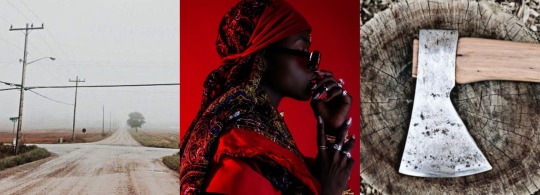
Tuesday's child is full of grace
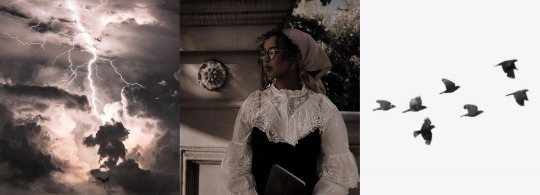
Wednesday's child is full of woe
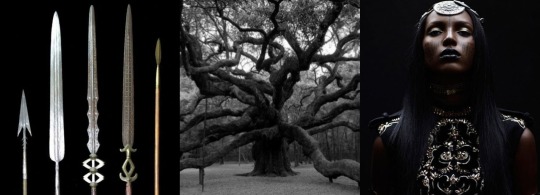
Thursday's child has far to go

Friday's child is loving and giving
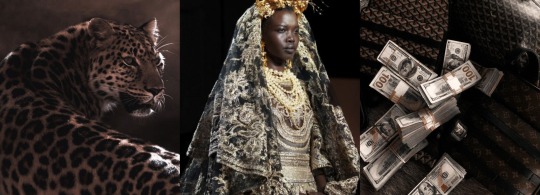
Saturday's child works hard for a living

And the child born on the Sabbath day
Is bonny and blithe, good and gay.
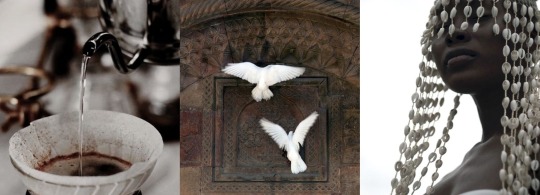
Monday: masters of finding new roads and moving forwards, tearing down blockages, trailblazers and warriors. Artists of all kinds, writers, poets, singers.
Tuesday: embodiment of thunderstorms, winds, omens, they're powerful conjurers with hot hands, always busy, always moving. Often times scholars, historians.
Wednesday: defenders, protectors, of humanity and nature as a whole. Warrior spirits at their core, but also great diviners and mediums.
Thursday: eloquent muses of the arts of love and war alike, great beauties who lead armies with equal charm and force. Sweetening, love and luck workings come easy to them.
Friday: personification of abundance and status. A commanding presence. Building legacy, great manifestors and conjurers, specially for work and finances.
Saturday: guardians of waters and the beyond. Community leaders, gifted healers, divine messengers. Carrying all the wisdom of the Elders and Ancestors.
Sunday: priests and priestesses that defy status quo, very old Ancestors coming back to reshape and rebirth reality. They will enter your life and purge every aspect of it.}
#Hoodoo#Rootwork#Conjure#Black Conjure#African american conjure#Hoodoo aesthetic#Hoodoo academia#I've had this in my drafts for so long!!!#enjoy :')#ATRs#ADRs#African Traditional Religions#African Diasporic Traditions#African Diasporic Religions#African Diaspora#afrolatine#afrolatinos
397 notes
·
View notes